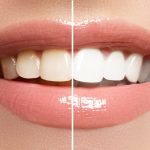How To Fix Gaps Between Teeth
Sport and teeth have a lot in common. Both start with a well-chosen and positioned line-up of players, who work together as a team. And when players get injured and have to leave the field, the team battles to function properly, and the game could be lost if the coach doesn’t call for substitute players from the bench. Luckily dentists have a bench or two of their own when to comes to filling the gaps between teeth.
What Causes Gaps Between Teeth?
Although many gaps, or diastema, are caused by injury, tooth loss as a result of gum disease, receding gums, decay or poor oral hygiene, not all are. Some exist as a result of genetics which give rise to various problems. These include teeth that are too small (or too big) in relation to the jawbone; tissue overgrowth which parts the front teeth; and the development of too few or too many teeth. All these, and bad habits like thumb-sucking as a baby can affect the tooth alignment and therefore the functionality of the teeth.
Consequences of Ignoring the Gaps
Whatever their cause, gaps can affect your oral health and its processes, ranging from losing the glory of your smile to affecting how the oral system works and its effectiveness in the long term.
How gaps affect the tooth alignment is one of the major problems. A missing tooth or large gap can break the symmetrical way the teeth which are aligned. Each is assigned a set position and function and by design, operate shoulder to shoulder and top to opposing top on order to facilitate the biting, chewing, and speech functions.
If this balance is skewed by a missing piece of the processing line, the other teeth will do their best to rectify the situation by skewing, shifting, or growing longer to fill the vacant space. The clamping down and cutting process will no longer function as well as it should, and cleaning your teeth as they skew could become increasingly difficult, leading to decay and increasing the possibility of gum disease.
Filling in the Gaps
When it comes to narrowing gaps caused by diastema, braces, veneers or bonding are chosen, depending on the size of gap involved and the end result required. But when gaps are caused by tooth loss, the dentist’s focus will usually be on replacing the tooth with partial dentures, bridges or implants.
Braces are used to exert pressure on the teeth and slowly shift them together to improve the alignment. But when the results sought are mainly aesthetic, tooth-colored composite resin covers the front teeth in the former of veneers, or is bonded directly onto them. These are shaped to narrow the gaps by widening the teeth on either side.
When the Gap Gets Wider
To handle slightly bigger gaps cause by broken teeth, and restore alignment and function as far as possible, caps (or crowns) might provide the solution if enough of the original tooth is left to support one of these customized artificial caps.
When a crown can’t take hold, and the gap involved is bigger, there are three suggestions the dentist will make. These include a removable partial denture clipped onto adjacent teeth, or a bridge which is bonded permanently onto teeth on either side of the gap. Both of these support artificial teeth which are suspended into the gap.
The final option is the most natural looking, and the most functional of the options available for replacing teeth. It’s the implant, an artificial tooth which is attached to the root area of the teeth.
Any of these processes will be affected should gum disease be the cause or the result of the gap, and gap-filling will be placed on the back burner until the gums are restored to health. This is where your dentist will provide invaluable advice regarding both what sort of gap-filling solution best suits your situation, and when it’s the right time to go through the procedure.



